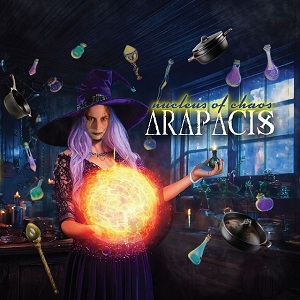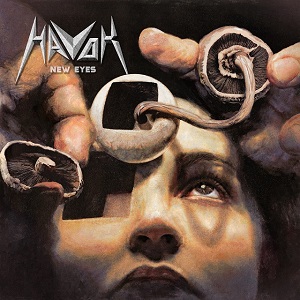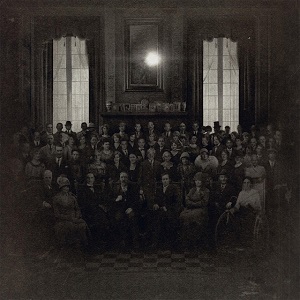A List Of 6 Teaching Strategies To Jumpstart Your Teacher Brain
April 28, 2020, 4 years ago

There are no “one size fits all” solutions suitable for all schools and students. A good teacher thinks creatively, seeks innovative methods and approaches, strives to adopt them in the classroom and help each learner reach one’s full potential, takes into account individual peculiarities, background, talents, motivations, and learning habits. In this article, experts from Pro-Papers have listed the best teaching strategies helping educators to maintain order in a dynamic classroom environment, making lessons engaging and productive.
Visualization
Young people are sick and tired of boring lectures, note-taking, and reading textbooks. It is especially challenging for juniors to understand abstract concepts and theories. They need more practical activities and bright impressions.
Technology provides many tools for visualizing learning. Smart desks, interactive whiteboards, and virtual reality headsets are becoming increasingly popular. It is possible now to make any topic interesting and demonstrative, show students why it is important for them and how it may be applied in practice, transmit information through various channels thus supporting young people with different learning styles. Those who do not like to read may watch videos and presentations or listen to audiobooks, build individualized learning strategies and get a unique experience.
Virtual reality allows learners to perform experiments which are way too expensive or dangerous in real life. For example, it is quite possible to mix explosive reagents at chemistry lessons or learn to operate a jet without risking human lives and material assets.
Educational trips may be also organized to visualize theoretical concepts. It is useful to visit museums, exhibitions, zoos, and national parks when studying history, art, and biology. Change of scenery increases learning enthusiasm and allows young people to look at things from a new perspective.
Cooperative learning
With the traditional educational system, students do most of their academic work (read textbooks, perform assignments, pass exams) single-handedly. But whatever their profession and workplace would be, they would have to cooperate with colleagues, bosses, clients, and subcontractors. Educational tasks performed in groups prepare students for the future, allow them to share experiences with classmates, learn from each other, develop empathy, self-confidence, leadership qualities, and critical thinking skills.
Educators may ask learners to discuss some burning issues, act out short drama sketches, conduct research projects and scientific experiments together. It is worth expanding the borders of a physical classroom and encouraging technology use. Social networks and instant messengers may be used for exchanging course materials, discussing academic tasks, distributing responsibilities, and demonstrating intermediate results.
Inquiry-based instruction
Professors usually provide information and even do not bother to check whether it is absorbed normally, do not ask what young people think about topics studied. It is just necessary to process course materials, memorize the key concepts, and show good results at exams. Learners occupy a passive position, act as objects rather than subjects of the educational process, feel that their opinion means nothing, and lose motivation.
Teachers should request feedback to understand whether instructional strategies are efficient or need to be improved, inspire students to be more self-sufficient, think for themselves, analyze personal impressions, develop original ideas, and boost problem-solving skills.
Questions may be of scientific nature, for example, “Why do shadows change size?” or “Why is division by zero a big no-no in mathematics?” Also, educators may invite learners to express subjective opinions by asking, for example, “Are video games harmful to the psyche?”, “Did Hamlet love Ophelia?”, or “Should religion be taught in schools?” It is worth organizing oral discussions and using written assignments, such as a persuasive or argumentative essay.
Differentiation
It is clear that all students cannot learn in the same way, at the same pace, and accomplish academic tasks equally well since they are not robots. Everyone has one’s own set of talents and skills. Teachers should treat each learner as a unique personality rather than a small detail in a huge learning machine. Assignments should be compiled based on individual abilities and needs.
This approach should reduce the gap between excelling and struggling students so that nobody feels bored or lags behind. Class leaders should get tasks with an increased complexity level, develop interesting research projects, and attend extracurricular clubs, while learners with poor academic performance should have more one-on-one time with a teacher and be provided with additional learning materials.
Each student may get individual instructions at regular meetings with a mentor. Also, there may be a number of work stations in a class. Young people should be allowed to choose the most suitable academic activities and study at a comfortable pace.
Allow tablets and smartphones in the class
Many old-school professors believe that smartphones and tablets are nothing more than distractions undermining academic discipline and prohibit bringing gadgets to a class. But these devices are something more than just entertaining toys. There are countless smartphone apps for learning. Students may take photos instead of rewriting passages from textbooks, record teachers’ explanations in video and audio formats instead of taking notes, use time management programs, get notifications about upcoming exams and important events, pass quizzes to prepare for tests and much more.
Tablets may be connected to a class network and an interactive whiteboard. This is a great way to perform group projects without crowding around a table. Also, educators may track each student’s actions and interfere if support is needed. Smart software memorizes users’ learning habits, designs individual pathways, summarizes the strengths and weaknesses of a particular person, and provides exercises boosting particular skills.
Behavior management
It is uneasy to focus on the topic of a lesson and understand challenging concepts in a noisy classroom. Therefore, learners should have a working mood and respect their tutors. Education would be productive only if a teacher creates an atmosphere of mutual respect and masterfully uses a stick and carrot method. It would be wrong to resort only to punishments. Students should be complimented, rewarded, and exempted from some academic duties for good behavior.











